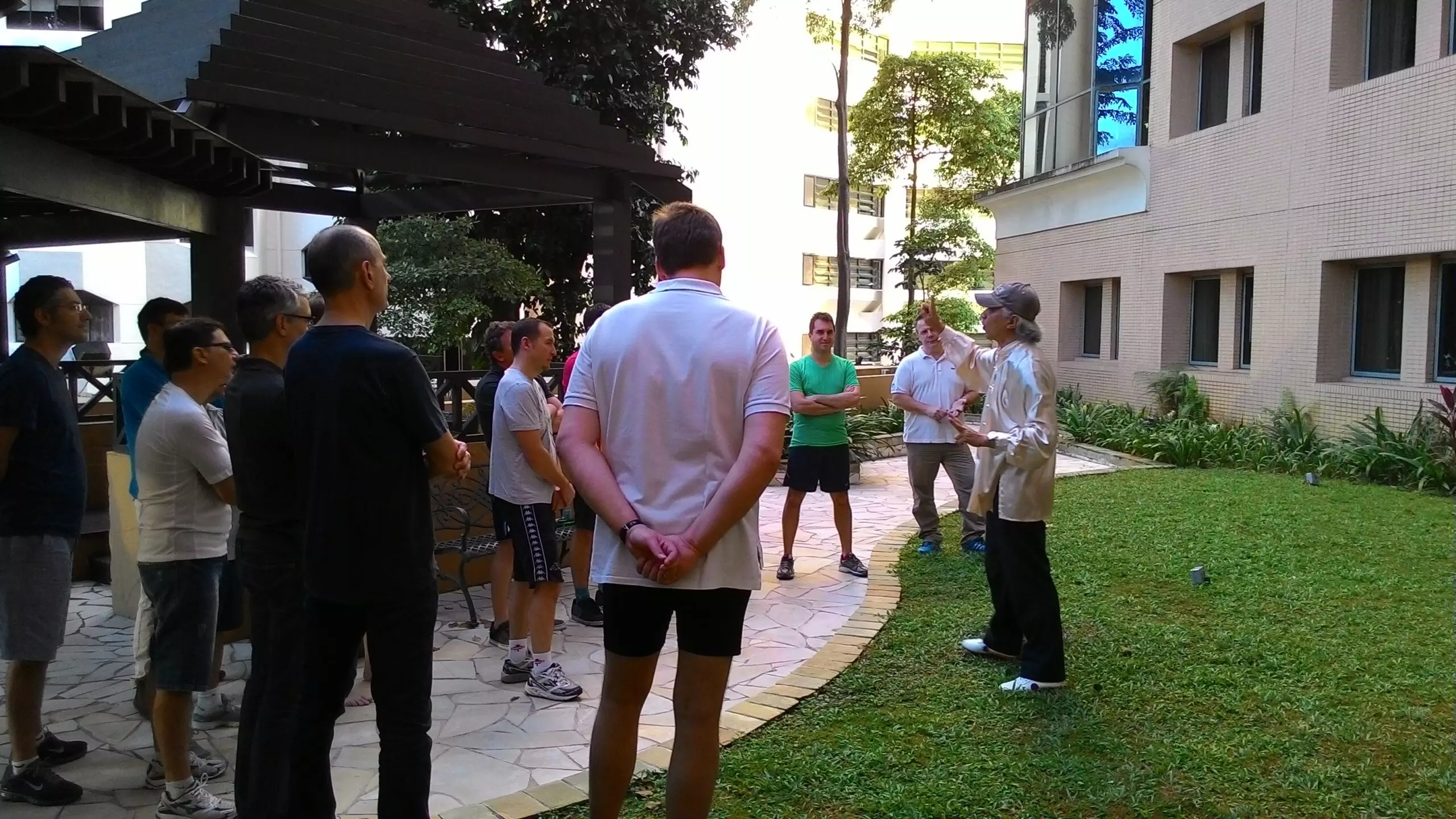Static and Dynamic Qi Cultivation
In Energy Tai Chi Chuan, Qi cultivation involves static and dynamic practices.
These practices enhance energy flow, develop internal strength, and deepen the practitioner’s connection with their Qi.
Here’s a closer look at these aspects:
Static Qi Cultivation:
- Zhan Zhuang (Standing Stake): This is a fundamental static practice where practitioners stand in various postures for an extended period. The goal is to develop relaxation, rootedness, and internal awareness while maintaining proper alignment. By holding these postures, practitioners gradually accumulate and circulate Qi throughout their bodies.
- Wuji Meditation: Wuji refers to a state of emptiness or non-differentiation. In this practice, practitioners assume a relaxed standing position while focusing on breath awareness and stilling the mind. This cultivates a state of deep calmness and inner stability, facilitating the free flow of Qi within the body.
- Dan Tian Breathing: The lower abdomen area, known as the dan tian, is considered an essential reservoir of Qi in traditional Chinese philosophy. Through specific breathing techniques, practitioners direct their attention to the dan tian while inhaling and exhaling deeply. This helps to gather and store Qi in this central energy centre.
Dynamic Qi Cultivation:
- Energy Tai Chi Form Practice: The practice of flowing movements in Energy Tai Chi Chuan forms is a dynamic method for cultivating Qi. Each movement is executed with mindful intention, coordinating breath with movement and promoting smooth energy circulation throughout the body.
- Silk Reeling Exercises involve continuous spiralling motions that refine coordination between different body parts while encouraging energetic connections along fascial lines. Silk reeling exercises help cultivate elasticity, flexibility, and harmonious energy flow.
- Tai Chi Push Hands: As mentioned earlier, push hands involve partner work where practitioners engage in controlled yet dynamic movements while maintaining sensitivity to their and their partner’s energy. This practice helps develop the ability to effectively yield, redirect, and issue energy.
- Fa Jin (Explosive Power): Fa Jin is the skill of releasing explosive power through proper alignment, relaxation, and coordinated movements. It involves generating and directing Qi in a focused manner to transmit force in martial applications effectively.
Combining static and dynamic practices allows practitioners to approach Qi cultivation from different angles, fostering a comprehensive understanding and experience of internal energy. These practices promote physical health, mental clarity, emotional balance, and spiritual growth.

